How to choose the right model from the wide variety of electric heating radiators?
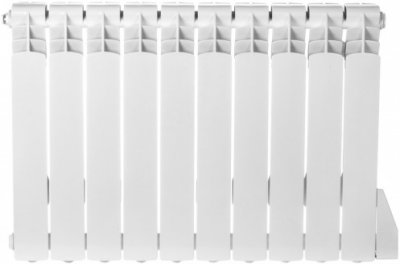
Often, conventional radiators fail to do their job in big houses and cannot heat such an area.
We have to resort to extreme measures: purchasing additional heating equipment.
Electric radiator will be the perfect solution to the problem heating in a private house or apartment.
Content
Characteristics of electric radiators
A number of advantages that help to distinguish it from the rest:
- Mobility. Radiators are easy to move to another place, and even to another house (sometimes lack of mobility becomes a problem). Electric radiators are easy to install, even a person without certain skills and without prior training can handle it.
- Thermostat. Electric radiators are easy to regulate the heat level, unlike other batteries and installations.
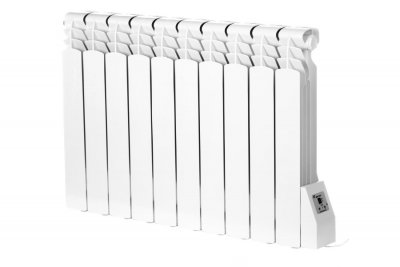
- Different types installations. Floor and wall radiators.
- Service life. This type of radiator rarely breaks down and, if used correctly, will last a long time.
- FunctionsThe new type of radiators has remote control, which significantly simplifies operation.
- Ecological componentThe equipment does not pollute the environment.
However, despite the abundance of advantages, such radiators have a number of disadvantages.
- Energy consumption. Electric batteries are an expensive pleasure. One kilowatt of electricity will go to heat ten square meters. Per month is spent about fifteen thousand.
- Temperature difference. If you are sensitive to temperature changes, then such radiators are definitely not for you. In the home, there will be a noticeable difference between the lower and upper parts of the house.
- Heating speed. Electric radiators will provide high-quality heating of the room, but will take a significant amount of time.
Types of batteries for heating an apartment, their operating principle
There are the following types of radiators.
Fan heaters
Basic configuration of such radiators:
- frame;
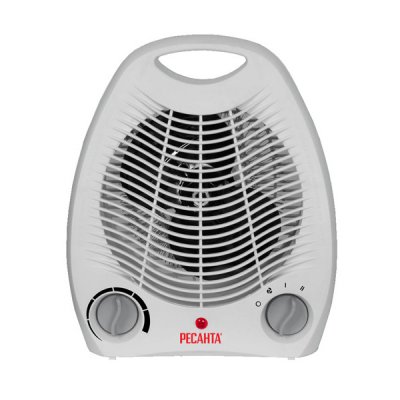
- heating element;
- fan.
More expensive radiator models are equipped with additional equipment:
- thermostat;
- rotary mechanism;
- air humidifier.
The principle of operation of the radiator is simple: cold air enters it and passes through the heating element. Then, the fan releases the hot air.
Floor standing
Advantages of floor radiators:
- It will take some time to transfer this device. a couple of minutes.
- They don't make noise, unlike other equipment, as they are equipped with an axial fan.
Wall mounted
Advantages of wall radiators:
- The power of such a device provides heating a fairly large area.
- Function remote management.
- When used and positioned correctly, they can prevent cold currents air when entering the room.
Oily
Based on heating the oil inside. Radiators have several sections that are filled with oil. Inside the radiator the liquid heats up, transferring heat to the main body.
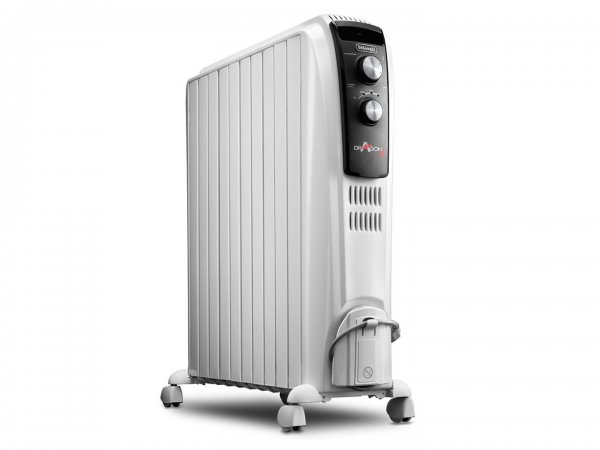
Photo 1. Oil electric heater model Dragon4 TRD4, power up to 2500 W, manufacturer - "De'Lonhgi".
Warm air currents emanate from the body. The amount of heat depends on number of fins on the radiator.
Important! Often buyers are afraid overdrying air, but this is not typical for this type of battery.
Advantages of oil radiators:
- Fire safety.
- Silence and the number of different functions when used (automatic shutdown when heated to a certain temperature).
- Additional ionization air.
- Ease of care behind the device.
- Mobility.
- Big heat transfer.
Infrared
These radiators are different from the usual ones. They heat the surrounding objects, such as walls, and not the air.
Types of infrared radiators:
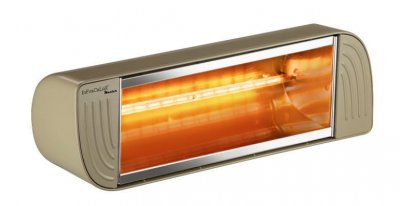
- Electric. They are most often used in private or country houses. The operating principle depends on the heating element: current (in ceramic), quartz tubes (in carbon), rubber cables (in film).
- Gas. The heating element in it is gas fuel. The main disadvantage is the large size, which hinders convenient use and mobility. The height of such radiators can reach twenty meters.
- Diesel. It is used only in the construction of large houses. It is compact, which makes it easy to set up at any time.
Advantages:
- Heats the entire room completely in a couple of minutes.
- Ecological component. Does not pollute the atmosphere and does not burn oxygen.
- Long service life.
- Soundproofing.
- Mobility.
- Simplicity use and installation.
- Tolerance to power surges.
Convectors with thermostat
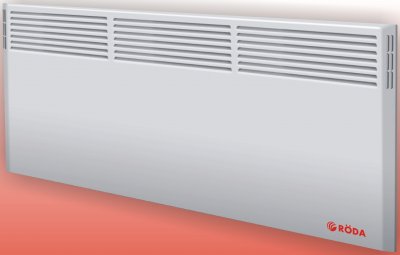
Convectors generate heat by heating the air inside them and by natural circulation of flows.
The distinctive feature of these radiators is that everything happens due to convection, not radiators.
Advantages:
- Low energy consumption, which minimizes waste.
- No noise or smell.
- A huge number modes and the possibility of remote control.
- Ease of use assembly and installation.
- Security at the expense of built-in temperature controllers.
- Uniform warming up the air.
Energy saving option
The most economical option may be "thermal curtain", which is hung on the wall. It consumes minimal electricity and quickly heats the air, which is why the time of use can be significantly reduced.
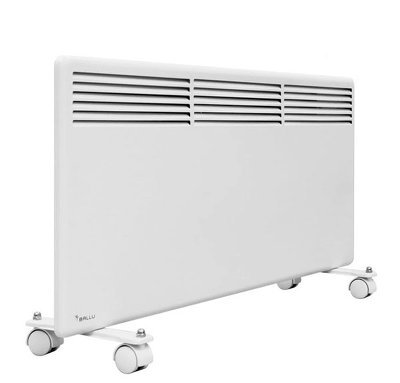
This type of battery also has a heat regulator.
When the room warms up to a certain temperature, the curtain automatically turns off, which will lead to savings.
If we turn to the types of radiators, then the most compact, convenient and cheap Options include convectors.
They have great power and quickly heat even a large room.
However, such equipment is inexpensive and does not consume much energy.
Reference! IN in both cases you will save on installation, since an experienced specialist will charge you a tidy sum, although the installation of equipment is relatively easy. Once you have understood the instructions, you can install the battery yourself.
Which ones are best for heating a private house?
The heating system in a private house is fundamentally different from an apartment, so pay attention to many nuances when buying. First of all, do not forget to look at heat transfer coefficient, price and quality, since in a private house you will need a battery that will last a little longer than in an apartment.
- Aluminum. When choosing this type, pay close attention to possible risks of leakage. Make precise mathematical calculations that will help you choose the ideal place for the radiator, since the equipment is prone to temperature changes.
- Cast iron. These are the most reliable devices that are ideal for installation in private homes. They can resist corrosion (and it is often found in private homes). Cast iron batteries will last a long time. The only downside will be their weight. If you install them in one house, then when you move, you will hardly be able to take them with you. Therefore, do not buy this option if you are thinking of changing your place of residence soon.
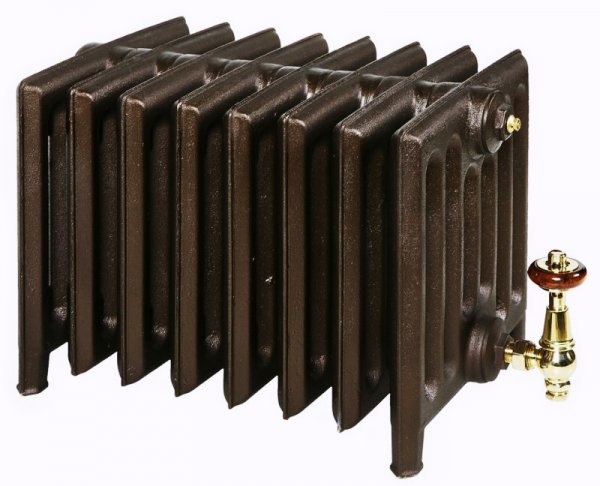
Photo 2. Cast iron design radiator model RetroStyle 220, heat output of one section - 112 W, manufacturer - "Bolton".
- Bimetallic. These are compact and convenient devices. But they often differ at a huge cost. Therefore, if you want to save money, this option is not for you. And if you buy a cheaper analogue, it will break down soon, and will also produce unpleasant noise and smell.
- Steel. This is the best option for installation in a private home. They are compact and convenient, and they are also easy to install yourself. Steel radiators, despite their size, heat the room perfectly, there will be no sudden temperature changes. But pay attention to the disadvantages of the device: these radiators are highly prone to formation of rust and plaqueTherefore, this device requires careful maintenance and attention.
We calculate the power and quantity
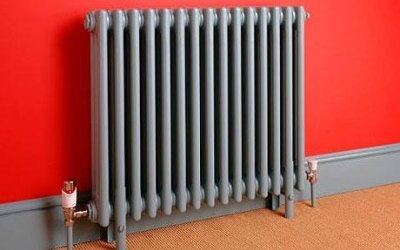
Enough for one square meter about a hundred watts. So find out the exact size of your room and multiply it by 100. The heat output will be calculated using the formula:
Q=S*100, Where Q — heat output, and S — area of the heated room.
For non-separable radiators, another formula is relevant:
N = Q/Qус, Where N — the number of sections, and Qus — the power of one of them (this is indicated in the official passport of the device).
Important! These calculations are valid for a standard room size. with a height of 2.7 meters.
Useful video
Check out this video that talks about the advantages and disadvantages of convectors and oil heaters.
Advice from the pros
Choose a radiator wisely, because every detail is important. Decide right away what is more important to you: price, product quality, ease of use or a combination of some other properties of the device.
Attention! If you do decide to connect the batteries yourself, it is strongly recommended that you follow safety regulations.
Consider the distance from the device to the wall (from 20 millimeters), to the floor (about 120 millimeters) and to the windowsill (about 100 millimeters). The functionality of the functions will depend on this. A steel radiator is best suited for an apartment, since it is compact, takes up little space and quickly heats the room.






